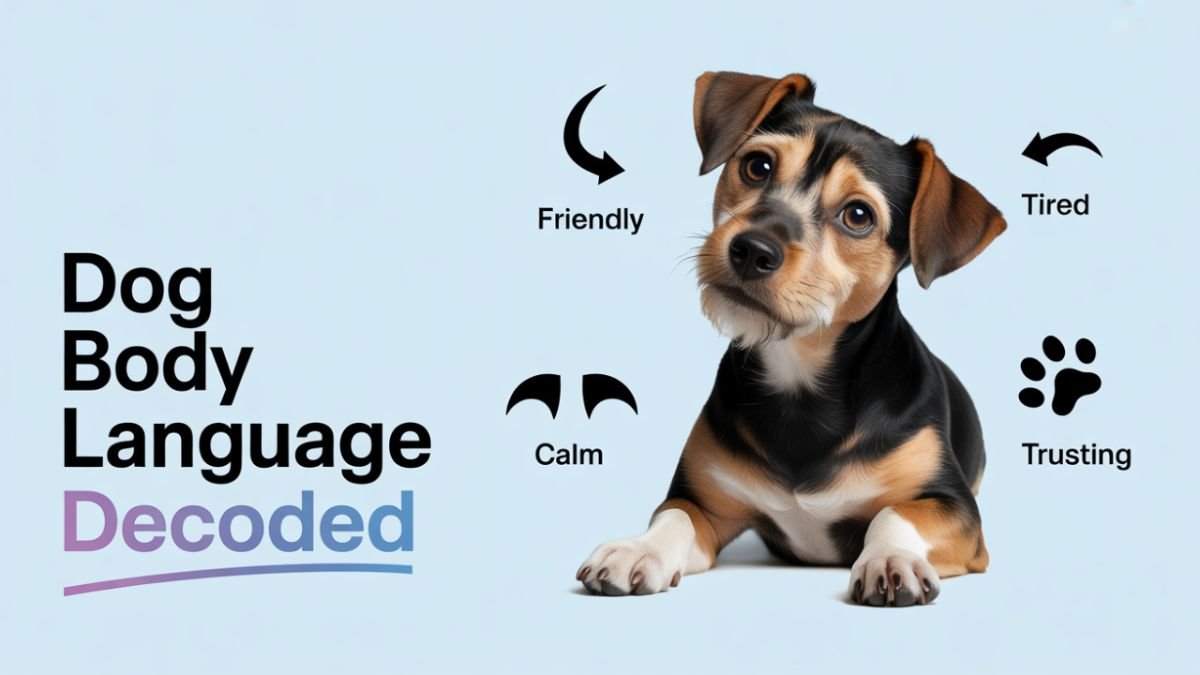We all wish that our dog could speak and express all his happiness, anger, pain or fear in words! But the reality is that dogs express their feelings and needs through a special kind of body language. If you understand your dog’s expressions, body postures and actions correctly, then you can take better care of him than ever before. Let’s know about the most important signs of dog body language – which will make the relationship between you and your furry companion even stronger.
When the dog is going through a phase of stress or fear
Dogs also feel stress and fear like us. Sometimes they can get nervous or stressed while going to the doctor, loud noises or in a new environment. Pay attention to these signs:
- Bends or bends the body: If your dog bends the body downwards, then he is scared or nervous.
- Tension in the mouth and face: Closed mouth, frozen face, ears back.
- Long yawns or frequent lip licking: These are signs of anxiety.
- Whale eyes: When the white part of the eyes becomes more visible.
- Tucking the tail between the legs: The most obvious sign of fear or deep stress.
Most of the times, the body language of fear, anxiety and stress is the same. In such a situation, try to comfort the dog and stay near it with calm hands.
Signs of aggression
The behavior of dogs can change in a moment one time they are calm and the next moment irritated or defensive. In a state of aggression, the dog usually warns with these gestures:
- Ears pressed back or standing straight: Sign of alertness or anger.
- Baring teeth, puckering lips: This is a clear warning—do not move any closer.
- Body stiff and square: Guarding or attacking feeling.
- Tail erect, straight and stuck: Preparation for attack or self-defense.
- Keeping the neck and head bent or extended: This is the real aggressive position.
If you or any dog around you see these gestures, calm down immediately, avoid going near, and try to lighten the atmosphere.
Signs of pain or illness in a dog
Dogs usually hide pain, because their wild instinct signals them to “not look weak”. But a keen eye can identify some signs:
- Repeatedly licking the wound: Frequently bothering the injured or painful area.
- Stress on the face, eyes narrowed: They look different when in pain.
- Bending the head down or abnormal posture: Front legs under the chest, or hind legs curled up.
- Change in temperament: Talking less than usual, lethargy, less appetite.
If you see such gestures, consult a doctor, because if treatment is not received in time, the problem may increase.
When the dog is happy, content and relaxed
Every dog owner wants to know if their dog is really happy. The good news—the signs of happiness are pretty simple:
- Body relaxed, relaxed posture: body weight is evenly distributed on all four legs.
- Head up—face open and soft sparkle in the eyes: for example, a slight wink.
- Tail usually down or in a relaxed position.
- A happy dog’s body language is usually softer, less rigid.
If the dog is very happy, it may be:
- Ears up alert but not nervous.
- Eyes wide open, face excited.
- Tail wags rapidly, swinging along the body.
Be careful if the dog’s body is stiff and rigid but the tail is wagging rapidly, it may be a sign of anger or attack. So always look at both the whole body cues and the situation.
Why is it important to understand your dog’s body language?
The body language of dogs is a reflection of their daily behaviour, health and emotions. When you start to understand these signals, you can:
- Get to know the mood, health, fear or happiness of the dog.
- You can recognize a dangerous or aggressive environment and can rescue it in time.
- When the dog is in pain, help can be provided quickly.
- You get closer to the dog’s heart and win its trust and love.
Every dog is different, its expressions can vary according to its nature and past experiences. So always look at its entire body posture, the surrounding situation and its personality. As you learn, you will start to understand your dog’s needs without speaking to him.
Conclusion: Really ‘talk’ to your dog!
Dogs do not have words, but they have the whole ‘universe’ to explain! A slight wave of happiness, hidden pain, soft complaint or silent trembling fear – everything is in their body language. You just need to be able to see with beauty and feel with patience.
Read your dog’s signals, give it time and give it the trust it needs from you. This is true dog love—the sweetest friendship, the deepest without words!
